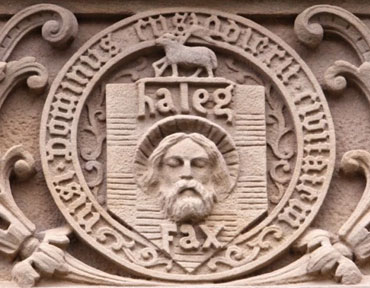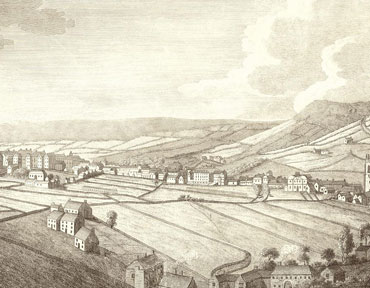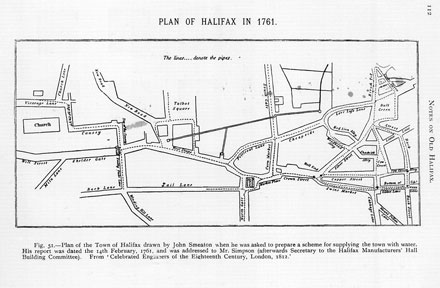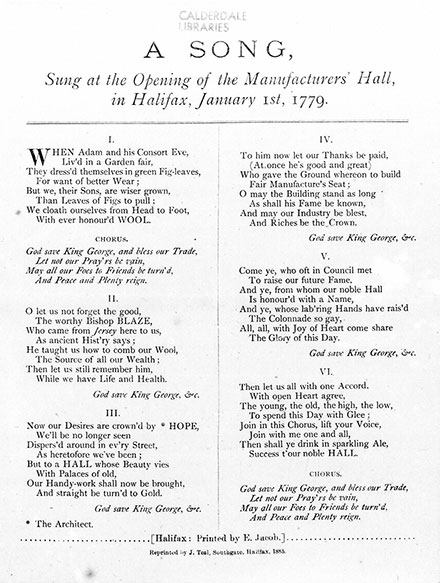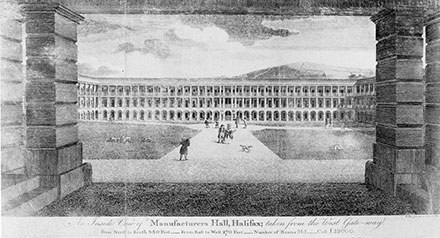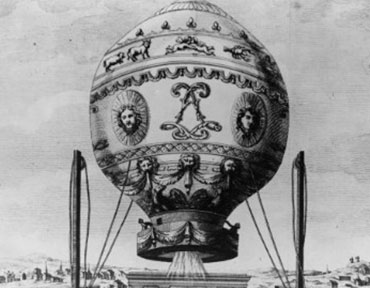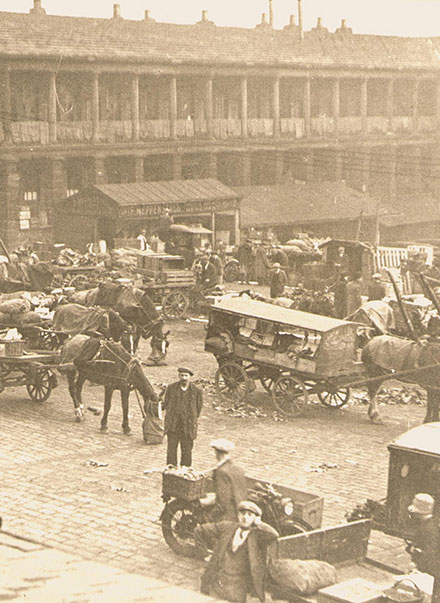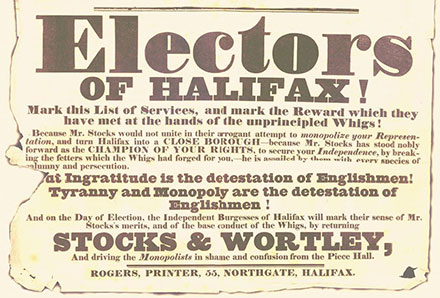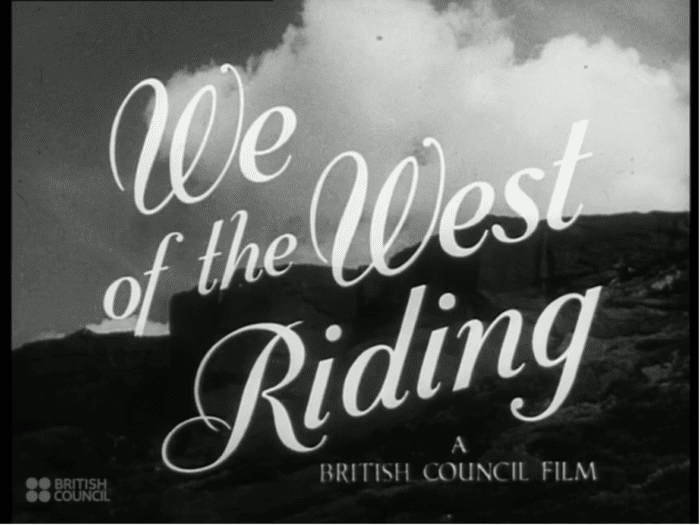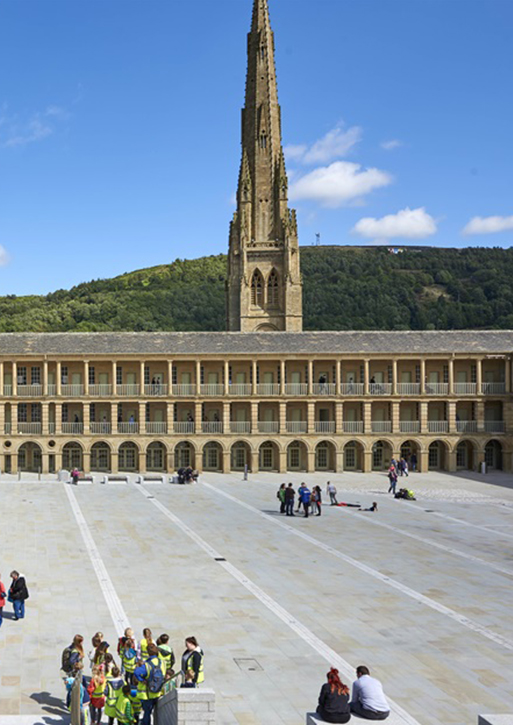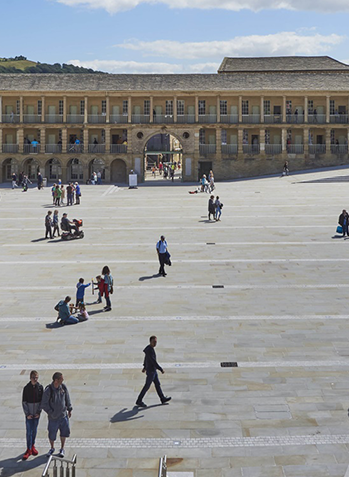Yorkshire’s most important secular building
The Grade I listed Piece Hall, Halifax is a rare and precious thing, an architectural and cultural phenomenon which is absolutely unique. It is the only remaining Georgian cloth hall in the world, the sole survivor of the great eighteenth century northern cloth halls, a class of buildings which embodied the vital and dominant importance of the trade in hand woven textiles to the pre-industrial economy of the West Riding of Yorkshire, from the Middle Ages through to the early nineteenth century.
Explore The Piece Hall Heritage
Photos provided by Stephen Gee
The world’s only remaining Georgian cloth hall
Dating from 1779, when it was built as a Cloth Hall for the trading of ‘pieces’ of cloth (a 30 yard length of woven woollen fabric produced on a handloom), The Piece Hall was the most ambitious and prestigious of its type and now stands in splendid isolation as the only remaining example. It is one of Britain’s most outstanding Georgian buildings.
It is impossible to overstate the scale and importance of this trade, not just to the history of Halifax and the West Riding, but to the nation as a whole over some 600 years between the twelfth and eighteenth centuries.
When it was built, The Piece Hall was a highly visible statement of the great wealth, pride and ambition of the cloth manufacturers. Although built for trade, it also embodied the most cultured sensitivities of the Enlightenment; these bluff northern manufacturers deliberately chose a design for their building which adapted the neo-classical orders of architecture derived originally from the Romans.
From its inception, The Piece Hall was a stunning combination of commerce and culture, an icon of hard business but also a broader statement about the history, the lives and the values of its surrounding community. This fascinating mix of purpose and idealism – business, arts and people, continues to influence and drive The Piece Hall’s role today. A direct link back over almost a quarter of a millennium of history.
The Piece Hall History
-
1091
The first record of the town of Halifax. In some records referred to as hālig feax gives rise to a legend. Meaning “Holy Hair” it is thought that the head of St John the Baptist was buried by missionaries in the town. Accounts tell us that John the Baptist was executed at the request of Herod’s daughter, his head delivered on a plate. Whilst his body was entombed by John’s disciples, could his head have been later recovered and given burial here? The town’s coat of arms carries an image of the Saint, whilst the Minster – dating back to the twelfth century – has always been dedicated to him.
-
1150
Cloth making can be traced all the way back to the twelfth century, when it was made on a small scale in and around Halifax. A medieval grave cover in the south porch of Halifax Minster dated 1150, depicts a pair of cropper’s shears, and is the earliest evidence for the textile industry in the area.
-
1473
Halifax produces the largest amount of cloth of any town in the West Riding: 4.5 times that produced by Leeds, and 8 times that of Bradford.
-
MAR 1774
‘…a meeting of manufacturers, who attend the market, was this day held, and it was the opinion of all present, that a Hall, erected in some convenient Place in this Town and Neighbourhood, would be of great publick Utility.’ Leeds Mercury.
Prior to The Piece Hall being built, a cloth market already existed in Halifax. However, by the 1770s it was increasingly considered unfit for purpose. Following a public meeting in March 1774, a large group of manufacturers who regularly attended the cloth market resolved on the building of a new hall, to be funded by creating an Association of Subscribers.
-
SEP 1774
Two sites were under consideration for the building of The Piece Hall, and the manufacturers were split into two camps depending on their preference. There was considerable public contest. Eventually, the Manufacturers’ Association settled on a parcel of land called Talbot Close, at that time standing in open fields, just to the south of the town centre. The land belonged to the wealthiest citizen of Halifax at that time, John Caygill, and the incentives he put forward no doubt influenced the final outcome. Caygill was obviously a shrewd business man and realised that locating the new Cloth Hall on his land would place the town’s major commercial centre next to his adjacent properties and businesses. His vision represents an early example of planned town centre development. It was agreed that Caygill would lease his land ‘to the merchants and manufacturers of Halifax for 5 shillings a year to be paid for 5000 years, on the condition that a hall of accommodation for manufacturers of worsted and other woollen goods is built on it within five years’.
-
EST. 1779
The Piece Hall opens its doors for the first time on New Year’s Day, Friday 1 January 1779. The opening, by The Piece Hall committee, involved “much fanfare and public ceremony”. A large crowd from all over Halifax and beyond congregated to proudly participate in the opening celebrations. After the North Gate was ceremoniously opened with a silver key, a grand procession of local tradesmen with bands of music marched from The Piece Hall through the streets of Halifax. In the evening there was a thrilling firework display by the “celebrated Signor Pietro, consisting of a beautiful Egyptian Pyramid illuminated with spiral wheels, globes and vertical wheels to be set on fire by a pigeon!” Cloth trading began the next day on Saturday 2 January. Trade would take place every Saturday between the hours of 10am and 12noon only. The Piece Hall would trade for just two hours each week.
-
1824
As the industrial revolution gained pace, ways of manufacture and trade changed significantly. The old cottage industries died out, and the need for the central market halls died with them. As the nineteenth-century moved on, use of The Piece Hall became much more varied. In 1824, with hot air balloons still a novelty, The Piece Hall was packed with people eager to witness man’s first foray into space. The ‘intrepid aeronaut’ was Charles Green – he had made his first ascent in 1821 and would go on to complete 500 flights. At a little after 4.30pm Green’s balloon rose into the air, and to the delight of the ‘immense crowd’ of onlookers, remained visible from The Piece Hall for fifteen minutes.
-
1868
In May 1867, The Piece Hall Committee reluctantly accepted that The Piece Hall could no longer pay its way and sought legal advice as to its powers to dispose of the Hall and hand it over to Halifax Corporation as a gift. The Corporation sought parliamentary approval and in 1868 the Halifax Improvement Act was passed, specifically enabling the transfer to take place, with much ceremony and celebrations, on the 4th October 1868. From 1871 it was put into new use as a wholesale market for fish, game, fruit and vegetables. This was a very successful venture, and The Piece Hall continued as a market with additional buildings built against and inside for almost a century.
-
1928
By the late 1920s there was a growing awareness that The Piece Hall merited better use than as a wholesale market. In 1928, the Halifax Rotary Club began agitation to remove the market and find a more fitting use for the building. Suggestions in the correspondence columns of the Halifax Courier ranged from converting The Piece Hall into an open air swimming pool to a home for old soldiers or cheap accommodation for the unemployed. In 1928, The Piece Hall becomes the first commercial/industrial building to be scheduled an Ancient Monument – but it’s life as a wholesale market would continue for decades to come. In 1954, The Piece Hall becomes a Grade I listed building – a category reserved for buildings of only the most exceptional interest, and accounting for just 2.5% of the UK’s listed sites.
-
1945
We of the West Riding. The Life of a Typical Yorkshire Family
A young Yorkshireman describes the life led by his family, who all work in the great woollen mills of the district. Their work is shown and their recreations, which include football, music, amateur theatricals and cycling over the beautiful countryside. They all love singing, and the film ends with the annual performance of Handel’s Messiah which is traditional in the West Riding.
(Films of Britain – British Council Film Department Catalogue – 1946)
Release year: 1945, Director: Ken Annakin, Production company: Greenpark, Producer: Ralph Keene, Screenplay: Phyllis Bentley, Cinematographer: Peter Hennessy, Composer: Leighton Lucas, Narration: Norman Shelley, Editor: Julian Wintle, Sound recording: W.S. Bland, Running time (minutes): 21 mins 06 secs, With thanks: British Council
Did you know?The Sykes family was largely played by members of the Coldwell family. Five of the eight children, however, were away at war at the time of filming, and so members of the local amateur dramatics group, the Halifax Thespians also seen in the film played the absent family members.
-
1972
In a 1972 Council meeting in which the fate of The Piece Hall was to be decided, Cllr Keith Ambler, Chair of the Development Committee spoke passionately against the recommendation of the committee not to submit a grant for The Piece Hall’s restoration. With his foresight, the decision taken was to save the building and bring it back into public use. Over the coming years, the wholesale market buildings were removed, stonework cleaned and restored and wood and metal repainted. Infrastructure and services were improved.
-
JUL 1976
On 3rd July 1976, The Piece Hall was officially re-opened for public use. Although there were still large areas of the building left unconverted and used for storage, it became for a time a bustling centre of activity, with many small shops, an Art Gallery and Museum and a Tourist Information Centre. Once again The Piece Hall staged a wide range of events and entertainment.
-
NOW
Following a multi-million pound conservation and transformation, The Piece Hall reopened in August 2017. The immense 66,000 sq ft open-air courtyard is now enclosed by a mix of independent bars, restaurants, shops and cafés. Alongside a new gallery for leading visual art exhibitions, the stories of Georgian Halifax are told in a state-of-the-art heritage centre and spaces that take you a step back in time. A vibrant cultural quarter for a new generation, with direct links to Square Chapel Arts Centre, Orangebox Young People’s Centre and a new Central Library and Archive. The Piece Hall conservation programme was led by Calderdale Council and supported by the Heritage Lottery Fund, with additional support from Garfield Weston Foundation and The Wolfson Foundation. The Piece Hall Trust is an independent body who are responsible for managing the space and realising this next chapter.
